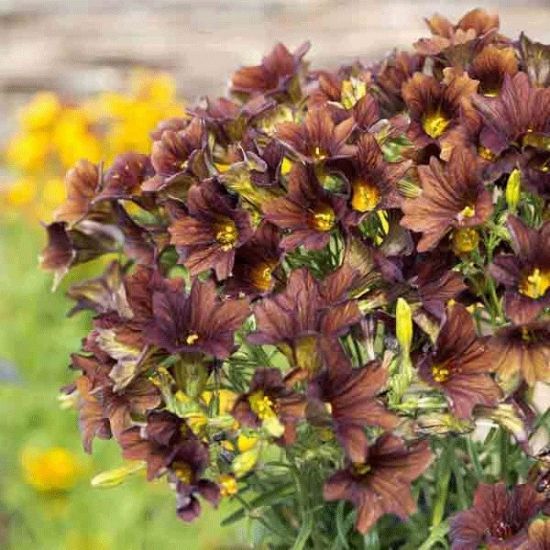Salpiglossis
KEY INFORMATION
Height: to 60cm
Spread: to 30cm
Half-hardy annual
Full sun
Germination: 7 - 21 days
VARIETIES AVAILABLE FROM COLLIE FLOWERS
Cafe Au Lait
SOWING & GROWING SCHEDULE
Sow Indoors: March - April
Sow Outdoors: May
Plant Out: May - June
Blooms: June - September

For those of you familiar with him, you have Michael Perry, Mr Plant Geek, to thank for introducing me to Salpiglossis. After a chat at Gardeners World Live in 2024 where he filled me in on trend setting plants - this wasn't one, but it was a favourite of his to grow as a child with his grandama, - I now wouldn't be withoutit in my garden.
Salpiglossis is an upright annual, with slender stems and wavy-edged, lance-shaped leaves. From summer to autumn these plants produce masses of funnel-shaped flowers to 5cm across.
Sow Salpiglossis seed indoors from March to April on the surface of a good quality seed compost, and cover the seeds with a very fine sprinkling of vermiculite, or compost. Place the seed tray in a propagator or seal it inside a polythene bag, keeping the soil damp but not wet until gemination. Do not exclude light as this aids germination.
When seedlings are large enough to handle, transplant into 9cm pots and grow them on in cooler conditions until large enough to plant outdoors.
When Salpiglossis plants are well grown and all risk of frost has passed, acclimatise them to outdoor conditions over 7 to 10 days. Transplant outdoors in full sun in any moist, well drained soil .
Alternatively, direct sow the seeds where they are to flower in May. In a weed free area, sow seed thinly in drills 3mm deep. After germination and when the plants are large enough to handle, thin them to 30cm apart.
Water regularly, until the pants are established.
TOP TIP
Salpiglossis does best during warm summers in a humus-rich, moist but well-drained soil in a site that is sunny and sheltered from cold winds. This South American native loves cool weather and blooms from spring until the plant begins to fade in midsummer. However, don’t be too quick to pull the fading plants as they will often produce a late-season burst of colour when temperatures drop in autumn.
